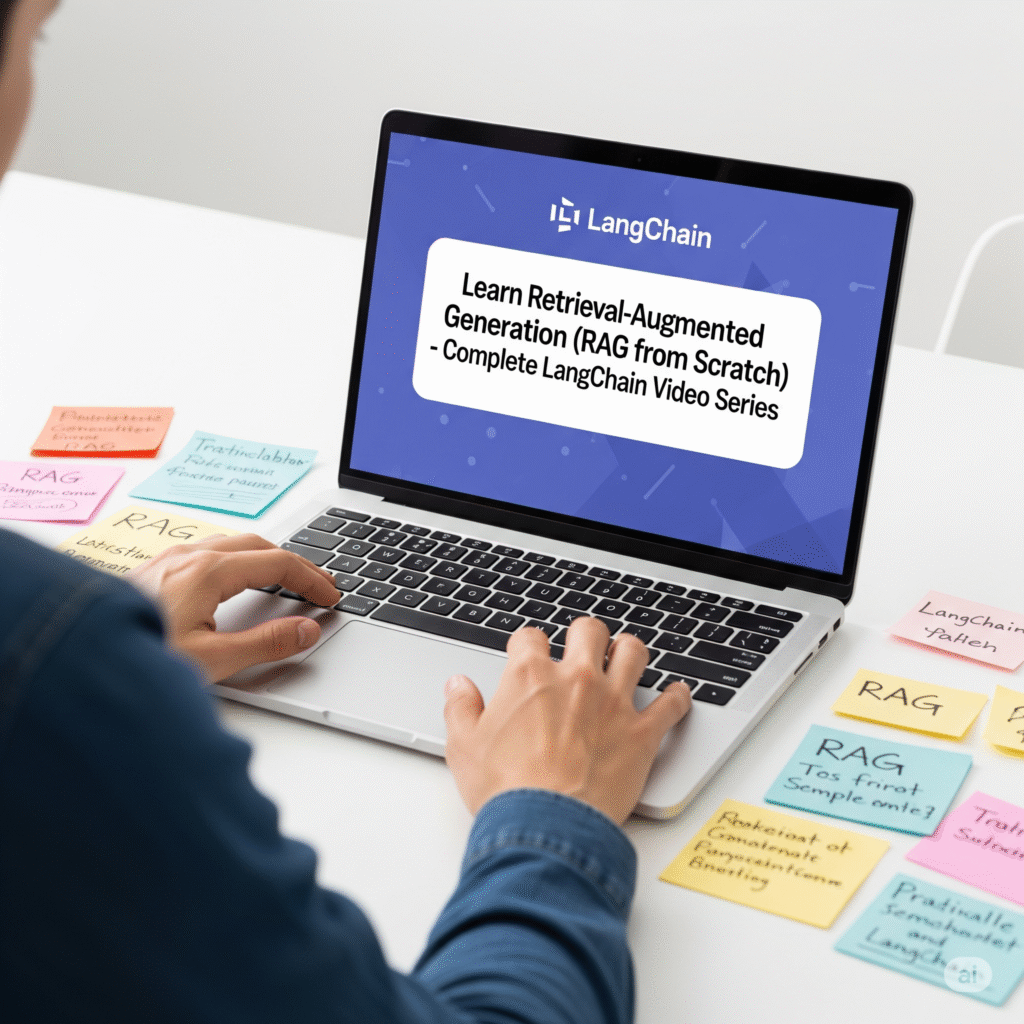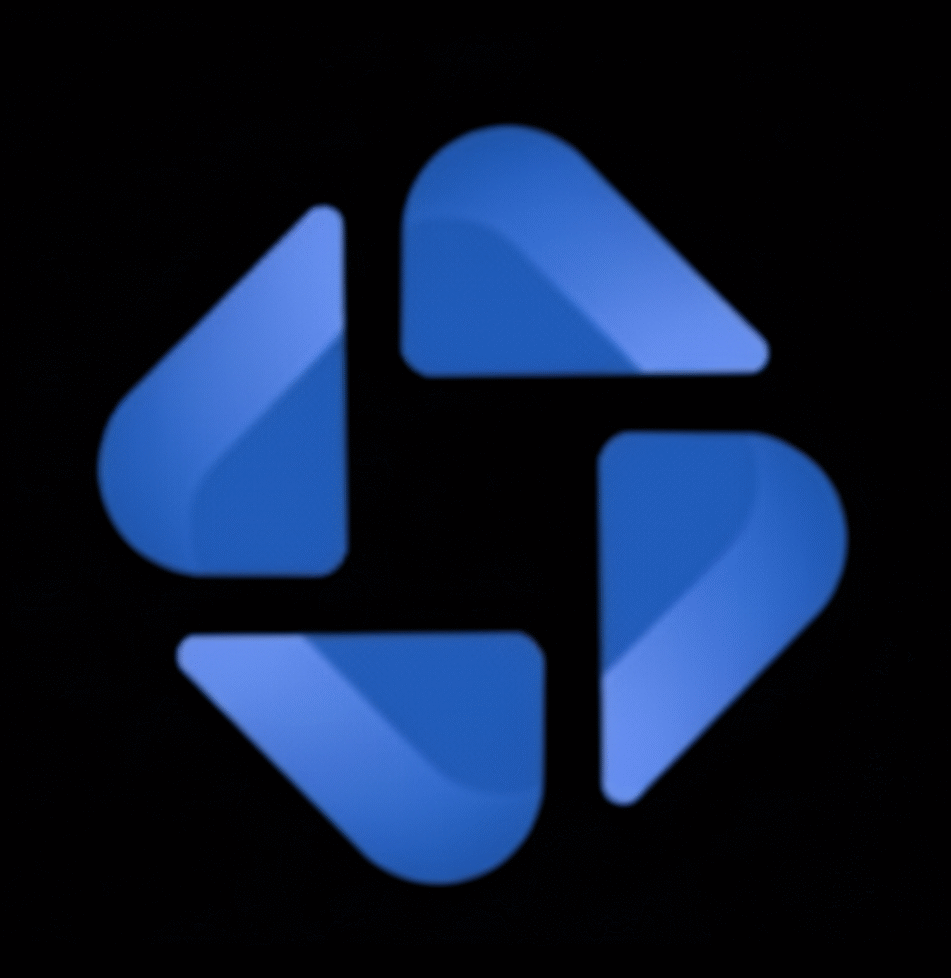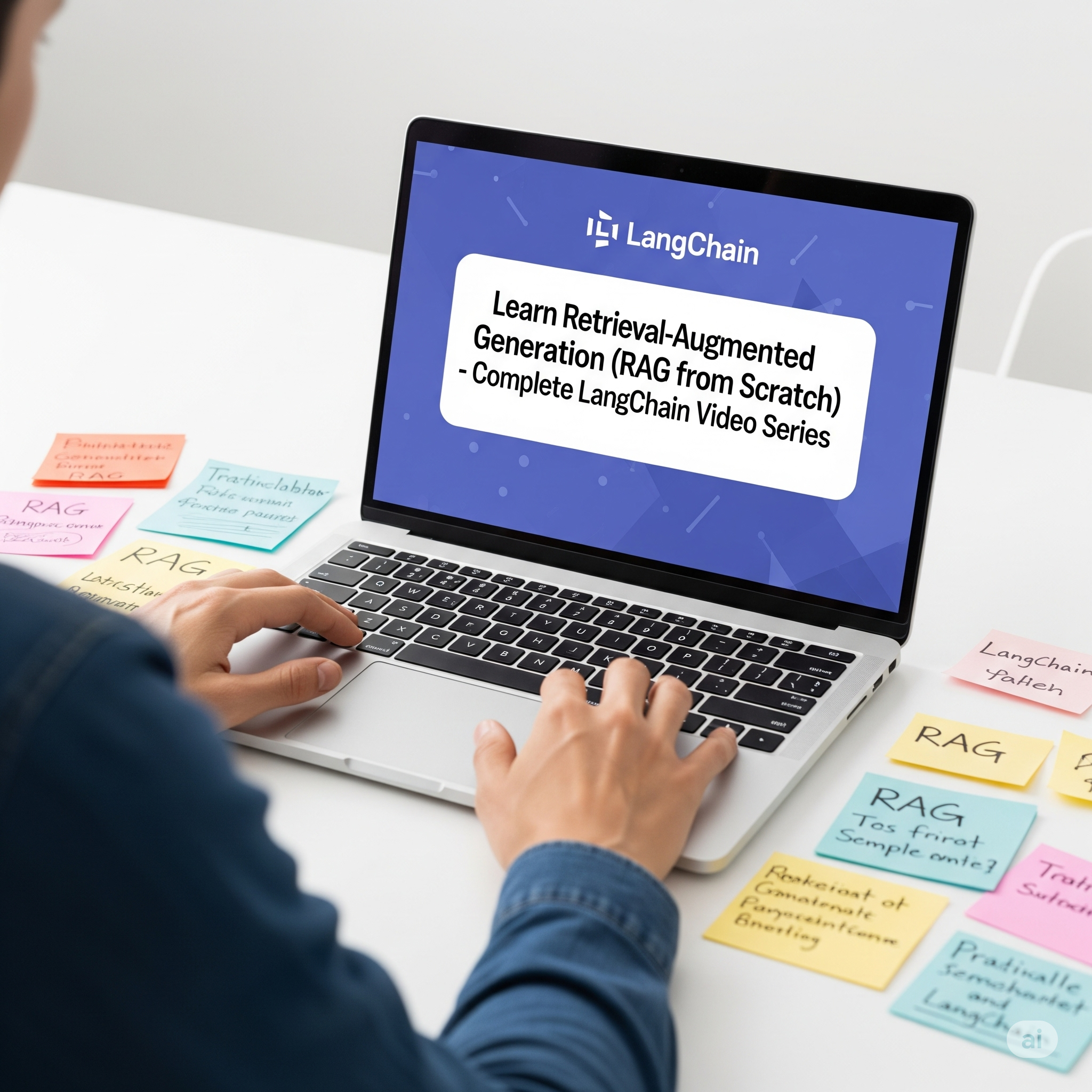Retrieval-Augmented Generation (RAG) is a powerful method that enhances Large Language Models (LLMs) by integrating external knowledge through document retrieval. It’s widely used in real-world AI applications where up-to-date, factual, and domain-specific information is essential.

If you’re looking for a step-by-step introduction to RAG from foundational concepts to advanced implementation techniques. LangChain’s 14-part video series is one of the most comprehensive and accessible resources available.
This blog post provides an overview of the series and what you’ll learn.
Table of Contents
What Is Retrieval-Augmented Generation (RAG)?
Retrieval-Augmented Generation is an architecture that combines document retrieval with LLM-based response generation. Instead of relying solely on the model’s pre-trained knowledge, RAG fetches relevant documents from a vector database and incorporates them into the prompt to generate accurate and grounded responses.
Benefits of RAG
- Access real-time or domain-specific knowledge
- Reduce hallucinations in LLM outputs
- Improve factual accuracy and trustworthiness
- Build scalable and modular AI systems
About the LangChain RAG Video Series
LangChain’s “RAG from Scratch” is a well-structured 14-part YouTube playlist that walks you through each stage of building a RAG pipeline. Each video is short, clear, and focused on both theory and practical implementation.
Watch the full playlist here:
LangChain RAG From Scratch – YouTube Playlist
Complete Breakdown of the RAG Series
Core RAG Pipeline (Parts 1–4)
- Overview – Introduction to RAG and its architecture
- Indexing – How to convert documents into vector embeddings
- Retrieval – Fetching the most relevant chunks from a vector store
- Generation – Feeding retrieved data into the LLM to generate output
Advanced Query Translation Techniques (Parts 5–9)
- Multi-Query Retrieval – Boosting coverage with rephrased queries
- RAG Fusion – Merging outputs from multiple queries
- Decomposition – Splitting complex questions into simpler ones
- Step-Back Prompting – Starting with a broader question to guide retrieval
- HyDE (Hypothetical Document Embeddings) – Using generated documents for improved embeddings
Scalable and Intelligent Retrieval (Parts 10–14)
- Routing – Sending different queries to different retrievers
- Query Structuring – Structuring queries for better parsing
- Multi-Representation Indexing – Indexing documents with multiple embeddings
- RAPTOR – Multi-hop retrieval for complex question answering
- ColBERT – Fine-grained, late-interaction retrieval technique
Who Should Watch This Series
This RAG tutorial series is designed for:
- AI engineers building production-grade LLM systems
- Backend developers implementing retrieval-based applications
- Data scientists working on intelligent search and QA systems
- Students and researchers exploring generative retrieval models
- Prompt engineers optimizing LLMs with external knowledge
Key Concepts Covered
- Vector databases and document embeddings
- LangChain pipelines for retrieval and generation
- Query expansion and multi-query techniques
- Modular RAG architectures for enterprise use
- Advanced retrieval models like ColBERT and RAPTOR
Why This LangChain Series Stands Out
- Beginner-friendly and concise
- Real-world production focus
- Open-source tools and reusable components
- Covers foundational and advanced topics
- Fast-paced, high-signal videos (5–7 minutes each)
Start Learning Now
If you’re building apps with LLMs and want to connect them with external data sources in a robust, scalable way, RAG is the technique to learn.
Start here:
RAG from Scratch – LangChain YouTube Playlist
Conclusion
Retrieval-Augmented Generation is not just an academic concept, it is the foundation of many AI products used today. From enterprise document search to domain-specific assistants, RAG offers a scalable and accurate solution to ground LLM responses in external knowledge.
LangChain’s video series makes this complex topic accessible and actionable. If you’re serious about building next-generation AI systems, understanding RAG is essential.


1 thought on “Learn Retrieval-Augmented Generation (RAG) from Scratch – Complete LangChain 14-Videos Series”